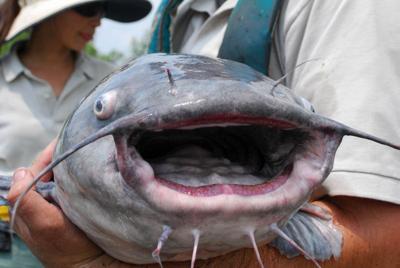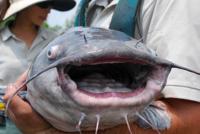DELMARVA - Researchers and environmental officials are keeping track of PFAS, or forever chemicals, turning up in the bodies of local fish - and they’re advising neighbors and seafood lovers on how to stay safe.
Scientists with the United States Geological Survey (USGS) analyze fish in the Chesapeake Bay and its tributaries to monitor the chemicals, which can cause various forms of cancer and other illnesses in large or sustained amounts.
Some of the affected fish include invasive species such as the Chesapeake Channa, formerly known as the snakehead in Maryland, and the blue catfish. Both are highly invasive to local waters, and experts have encouraged people to catch and eat them as much as possible.
Experts, however, urge caution.
Heather Walsh with the USGS says the detection of forever chemicals is not surprising given the occasional presence of PFAS in the water. She says her team has detected the chemicals in the very plasma in fish blood.
“They can be coming from industry, urban locations, just storm water runoff from residential areas. They’re in bio solids that are applied to agricultural fields. So they come from a lot of different sources.”
Luckily, Maryland’s Department of the Environment offers Fish Consumption Advisories along with a helpful map. The site lists affected fish species, what kind of chemicals were detected, and how much and how often it is safe to eat the impacted fish. Walsh encourages fishing enthusiasts to check the site before consuming their catches.
Here in Wicomico County alone, snakeheads, black crappie, and large and smallmouth bass have shown elevated levels of PFAS, according to MDE’s Fish Consumption Advisory map.
WBOC spoke with local fishermen about the detected contamination. Edward Taylor says he has been fishing in Salisbury all his life, but does not eat fresh fish from his outings. If he did, though, he tells WBOC he’d take advantage of the website.
“If I decided to eat a snakehead or Chesapeake Channa, you know, I want to make sure I’m safe.”
Maryland’s Department of Environment (MDE) underscored the importance of using their data and map to keep safe.
“Fish is an important part of a healthy diet, and it’s essential that people have the information they need to make informed choices for themselves and their families,” a statement from MDE reads. “While most fish from Maryland waters can be safely eaten in moderation, our fish consumption advisories, including those related to PFAS, offer guidance on certain recreationally caught species. Maryland is committed to informing the public, following the science, and providing data as part of our comprehensive response to PFAS as an emerging national concern.”
To check for any contaminated fish before you head out on your next fishing trip, you can check MDE’s map and advisories at this link.



